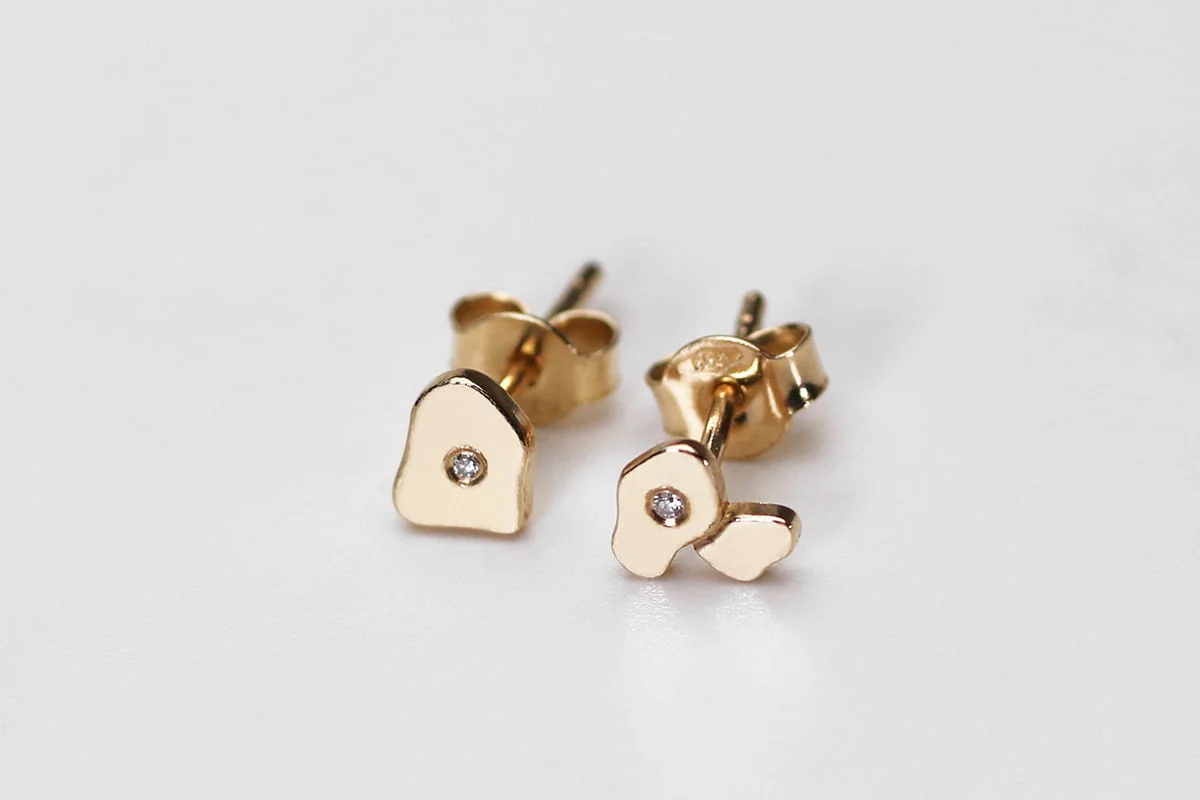No products in the cart.
Posted in Tips & Tricks
What is the deal with gold?
Reading time: 5-6 minutes
Before buying precious metal jewelry, it is helpful to have some basic information to ensure the best choice.
This is why we compiled this quick guide with helpful information about gold, the most prevalent metal in jewelry making, especially where engagement rings and wedding bands are concerned.

1. 14K, 18K, or 24K gold?
Pure gold, which is 24K, is soft and cannot be used in jewelry making.
We use alloys with other metals (silver, copper, palladium) to ensure improved resistance. This is how we obtain 14K or 18K gold, which are considered alloys.
Gold carats measure the gold ratio in the alloy.
Gold alloys are produced using silver, copper, palladium, platinum, etc. EU authorities forbid the use of nickel in objects that come in direct contact with the skin due to its allergenic properties.
- 24K gold is pure gold. Since it is exceptionally soft, it cannot be used in jewelry making.
- 14K gold is the most commonly used alloy, thanks to its high resistance.
- 18K gold is pure and more expensive but also softer than 14K gold. This is why it is not recommended for delicate or detailed jewelry, which can be affected by time. Also, it is more prone to scratches than 14K gold.
- 9K gold is also used in some countries, such as the UK. It is highly resistant but highly oxidizing, which is why we recommend against it.
2. Does gold oxidize?
Pure gold is not affected by oxidation.
However, alloys can oxidize in time due to the other metals used in the recipe. The main culprit is copper.
We can, then, admit that 14K gold, which has a higher ratio of common metal, is more prone to oxidation than 18K gold. However, please note this process happens over extended periods and is extremely slow, especially if the pieces are cared for properly.
9K gold oxidizes easily due to the high content of common metals in the alloy.
3.White, yellow or rose gold?
In its natural state, pure gold is yellow.
“Coloring” the gold is possible in alloys by adding metals that affect the natural, yellow color of the gold this way:
- 24K gold is a deep yellow.
- 18K yellow gold is the alloy with the deepest shade of yellow due to its high content of pure gold (75%). Other metals used in the alloy are silver and copper (25%).
- 14K yellow gold is a paler shade of yellow, due to a higher content of silver and copper (41.5%), compared to that in the 18K yellow gold (25%).
- 18K white gold has a slightly yellow shade due to the relatively high ratio of pure gold (75%) to “whitening” metals, such as silver, palladium, platinum, etc., which account for 25% of the alloy.
- 14K white gold is almost white, comparable to silver, with the faintest shade of yellow still. The alloy is made of pure yellow gold (58.5%) and white metals (silver, palladium, platinum 41.5%).
- 18K rose gold has a red-yellow shade. Aliajul este alcătuit din aur galben, pur (75%) și cupru (25%).
- 14K rose gold has a stronger red shade, due to its high copper content (41.5%), compared to the 18K rose gold (25%).
4. Plating gold jewelry
Plating is the process of adding a thin layer of a different metal, usually a more resistant one, than the metal from which the pieces are made.
Gold jewelry is mainly plated using rhodium. Rhodium is a precious white metal, highly resistant and very expensive.
Rhodium plating is used for white gold jewelry to cover the slight yellow shade of the metal, make them more resistant to scratching and ensure a better shine.
Due to aesthetic reasons, we use black rhodium for plating select Contemporia pieces.
With time, the rhodium layer wears off, but jewelry can be replated. The process is fast and affordable.
5. Gold hallmarks
According to Romanian regulations (OUG 10/2018), gold jewelry has to be hallmarked with symbols confirming the quality of the metal and the manufacturer.
Any piece of gold jewelry should bear three hallmarks: the title hallmark, the responsibility hallmark, and the national hallmark.
- Title hallmark – this is the conventional way of telling which metal is used in a piece and is applied by the manufacturer on all precious metal pieces. For instance, the hallmark is 585 for 14K gold, 750 for 18K gold, 925 for silver, etc.
- Responsibility hallmark – is unique for each manufacturer. Contemporia responsibility hallmark is CTP. Using this hallmark, the manufacturer takes responsibility for any hidden vices of the precious metal piece.
- National hallmark – this is the official hallmark, protected by law, and is represented by a unique symbol for the precious metal and the type in Arab numerals. This is applied on precious metal pieces exclusively by ANPC, the national body charged with protecting customers before selling those pieces.
Exceptions
- Gold pieces weighing less than 1 gram will not bear hallmarks.
- Similarly, jewelry that cannot bear the three hallmarks due to manufacturing limitations can be sold with only the national hallmark or accompanied by a testing certificate issued by ANPC.
- Imported jewelry that bears equivalent hallmarks recognized by Romanian authorities.












